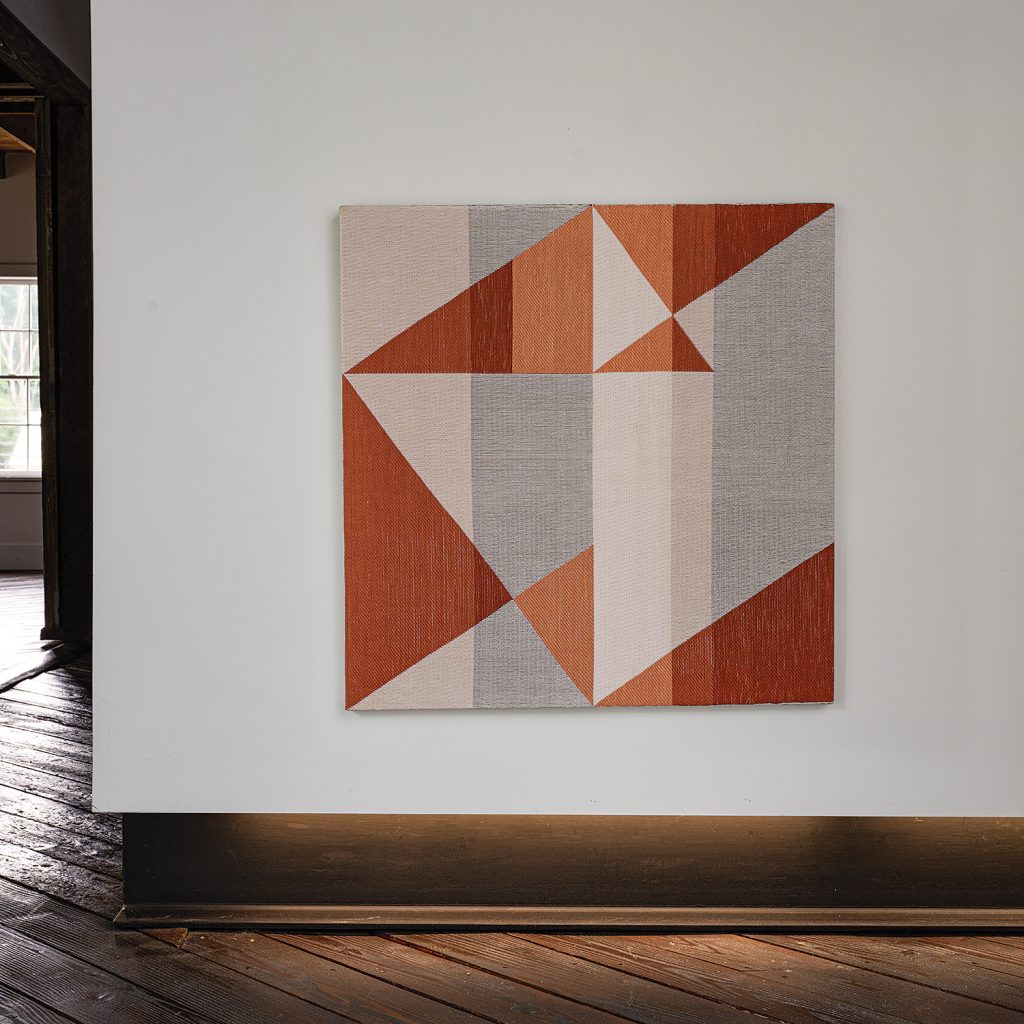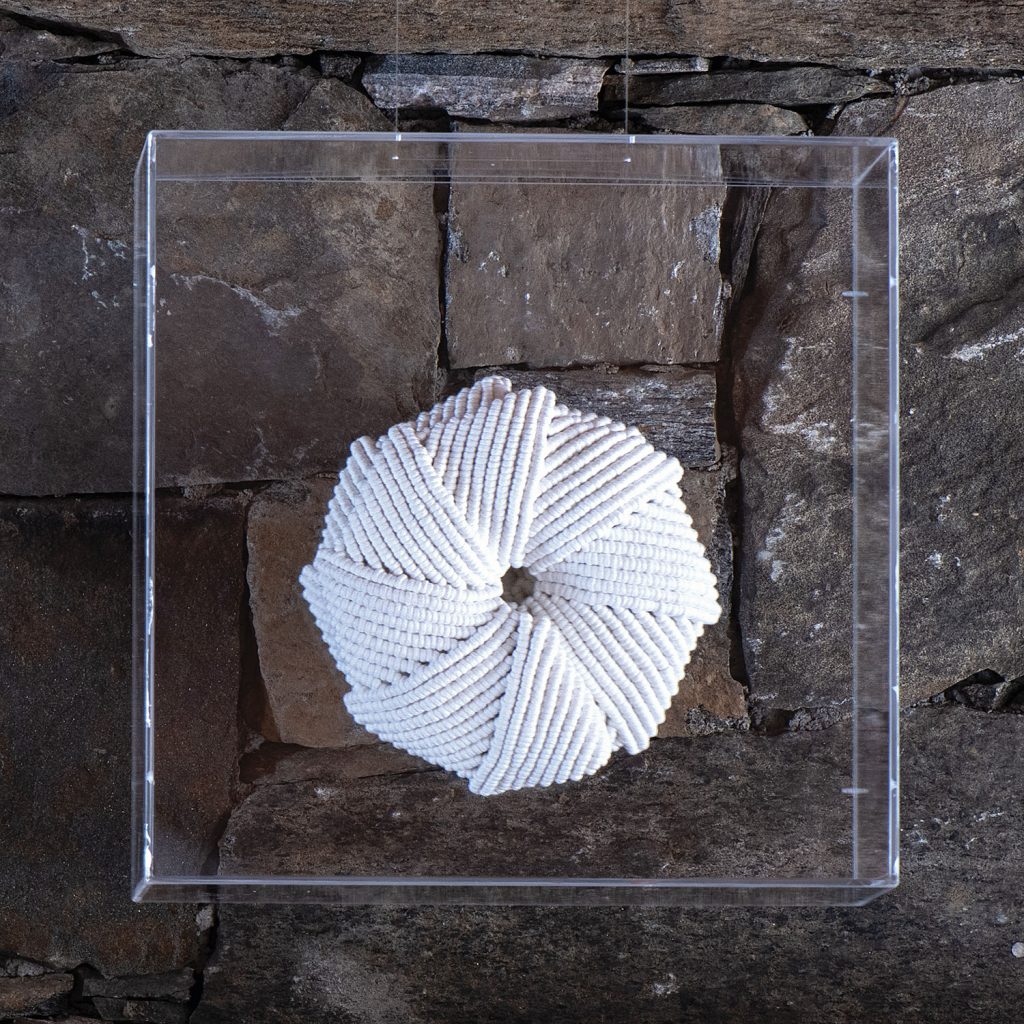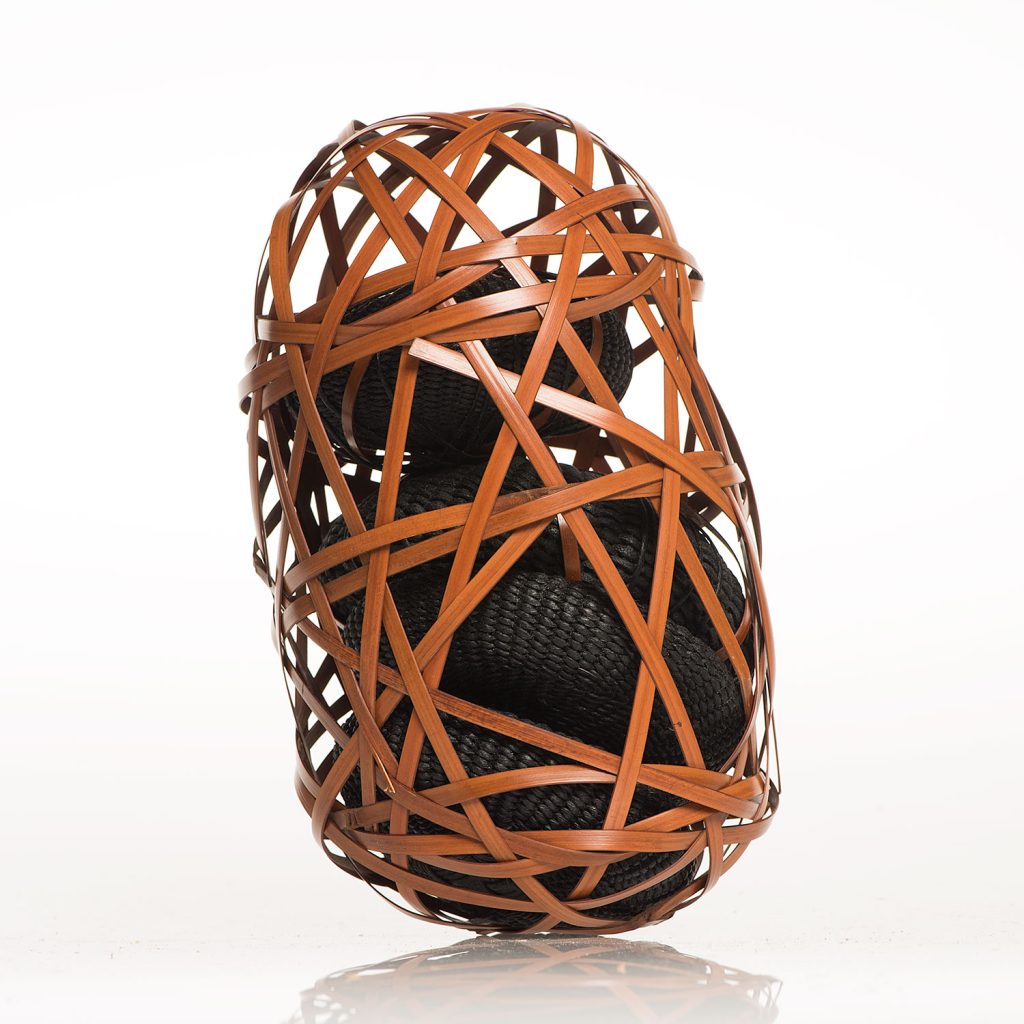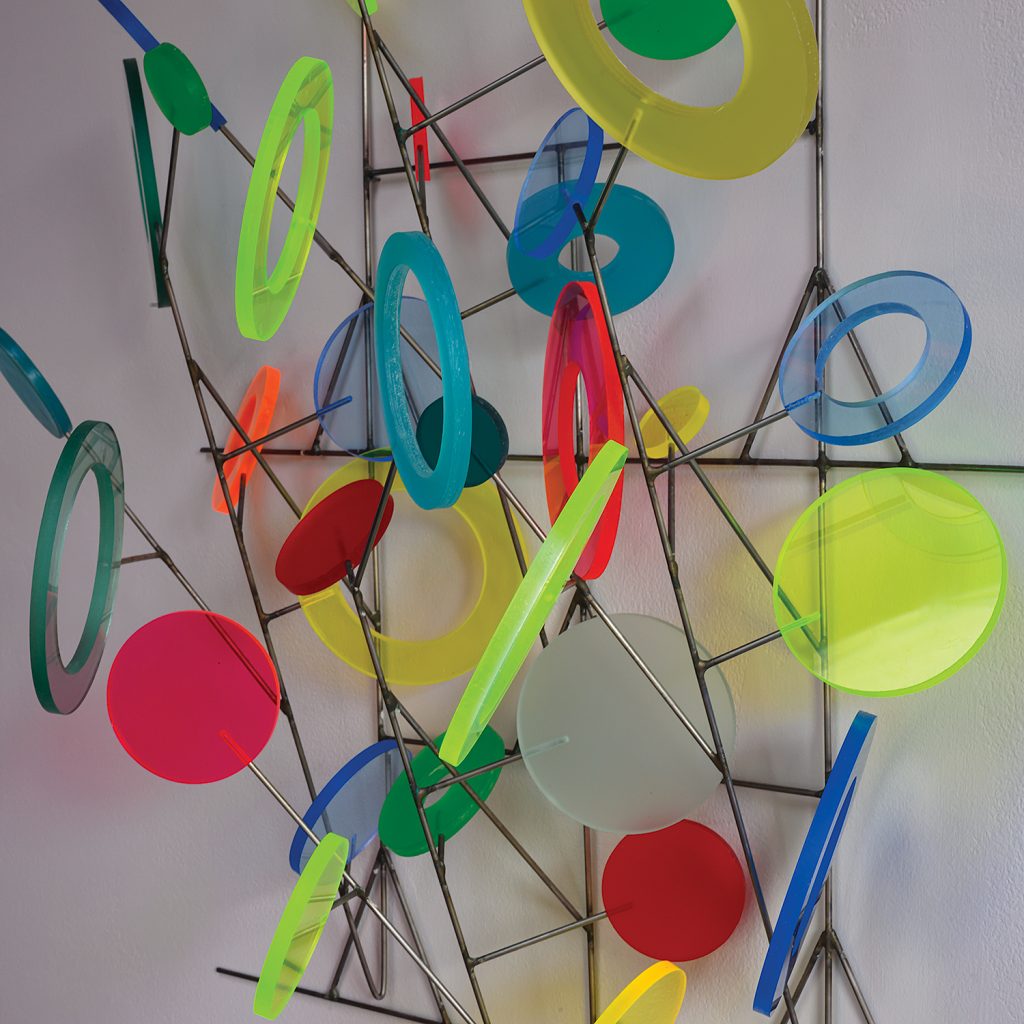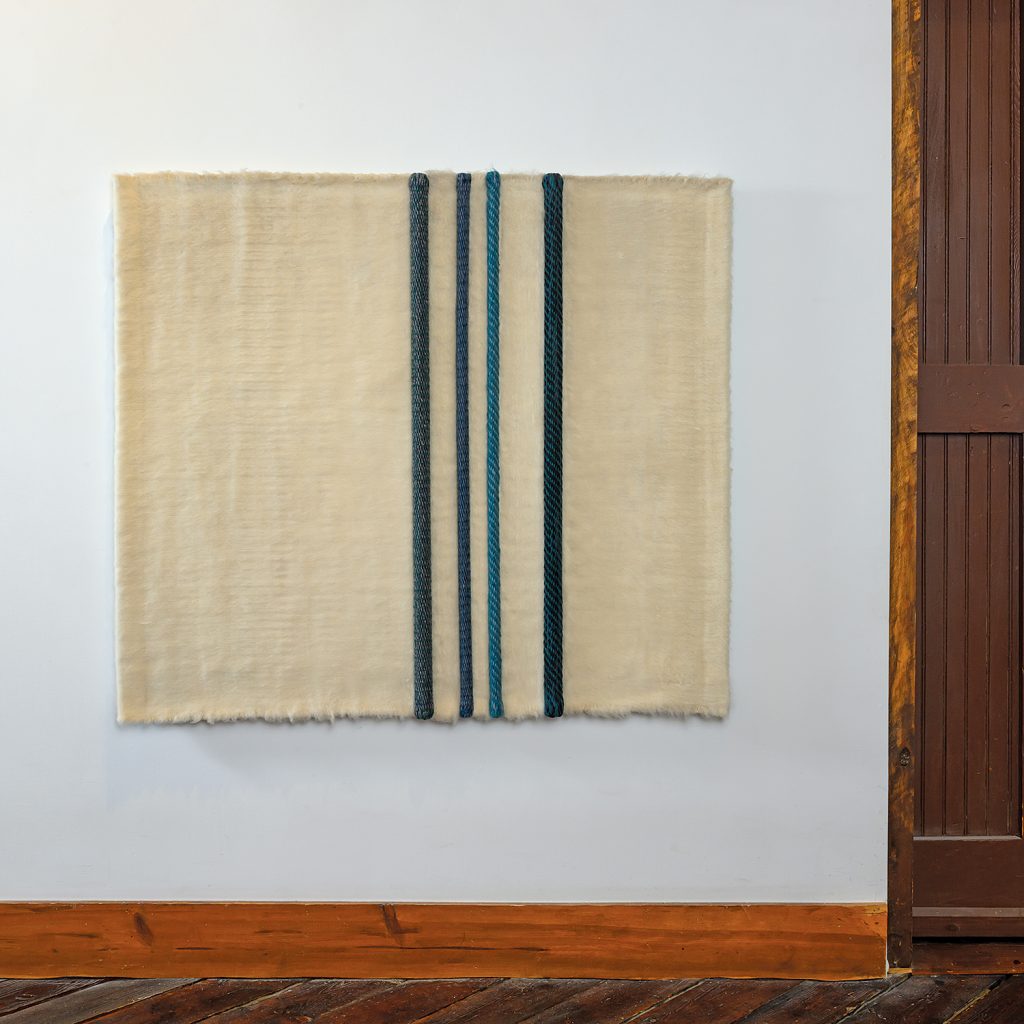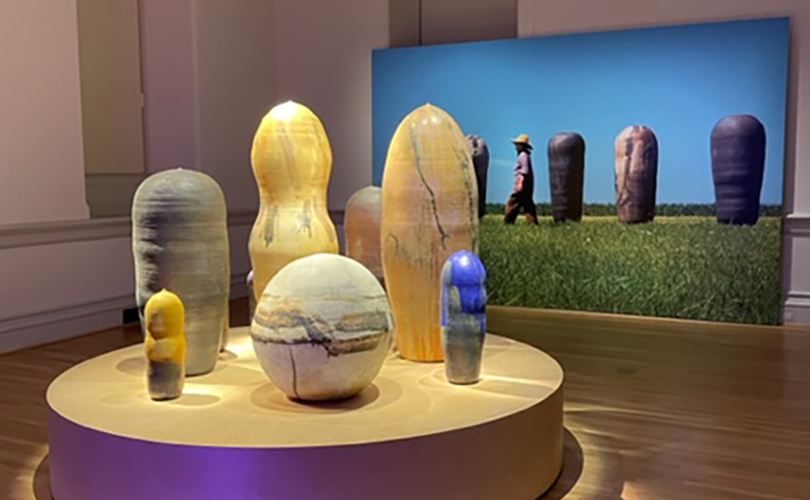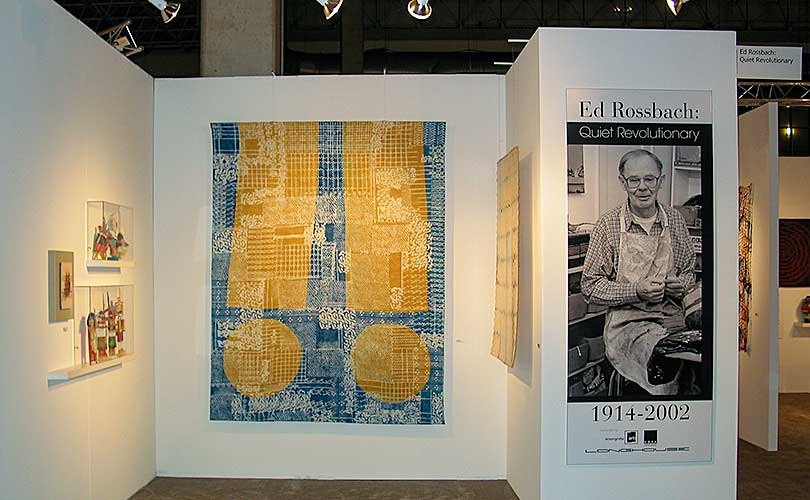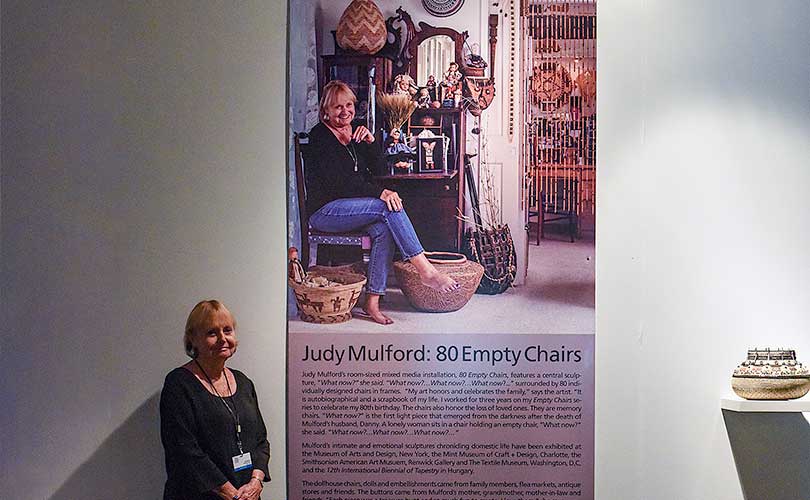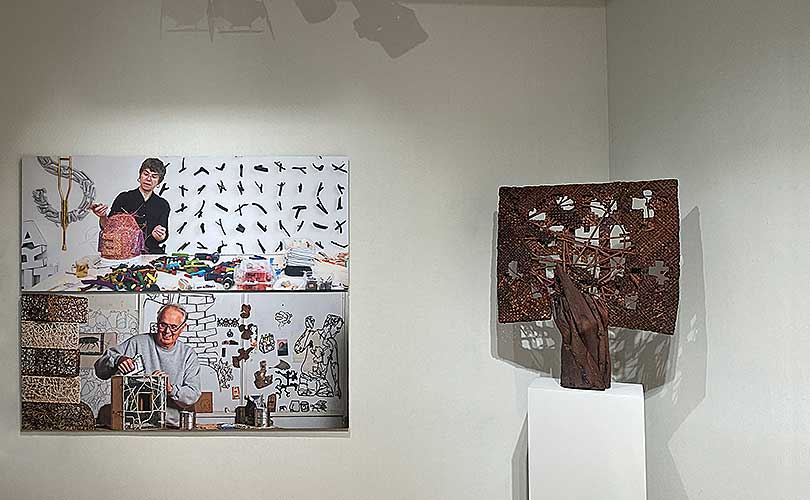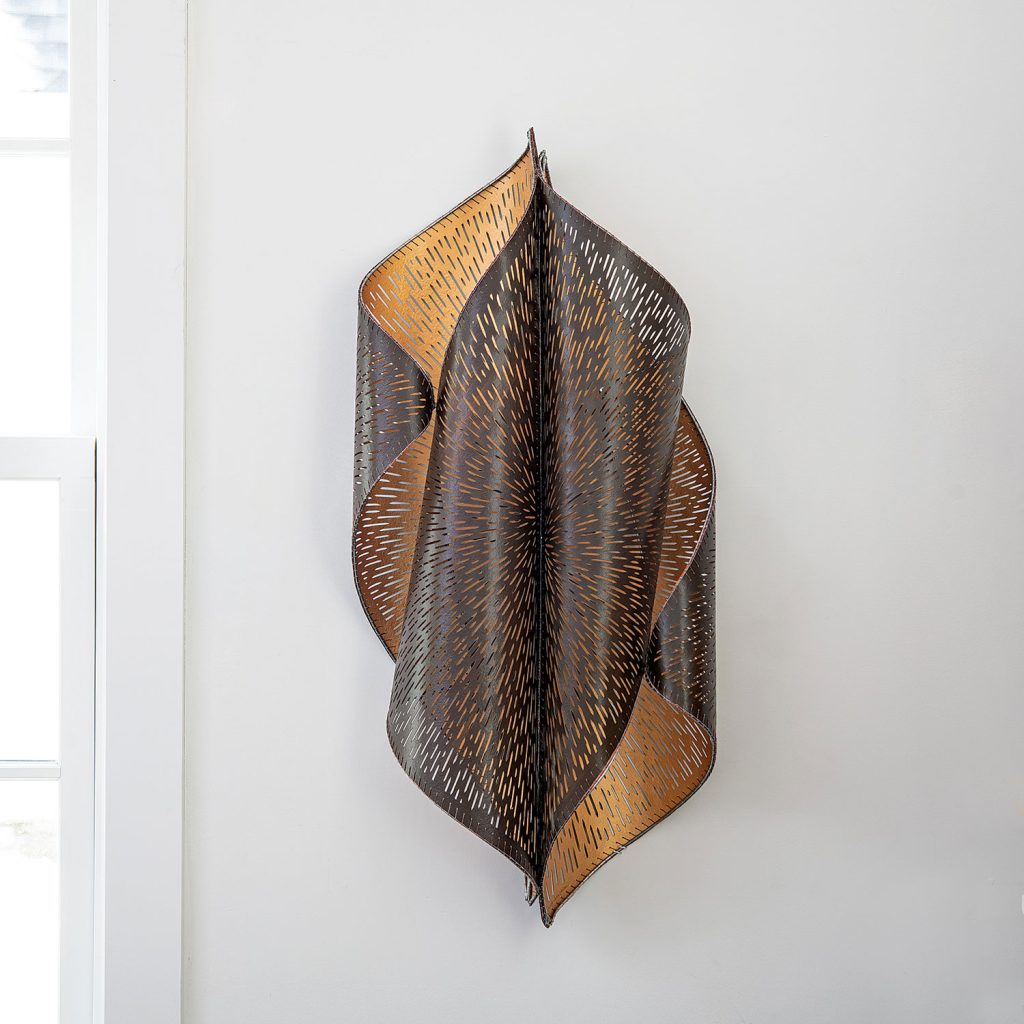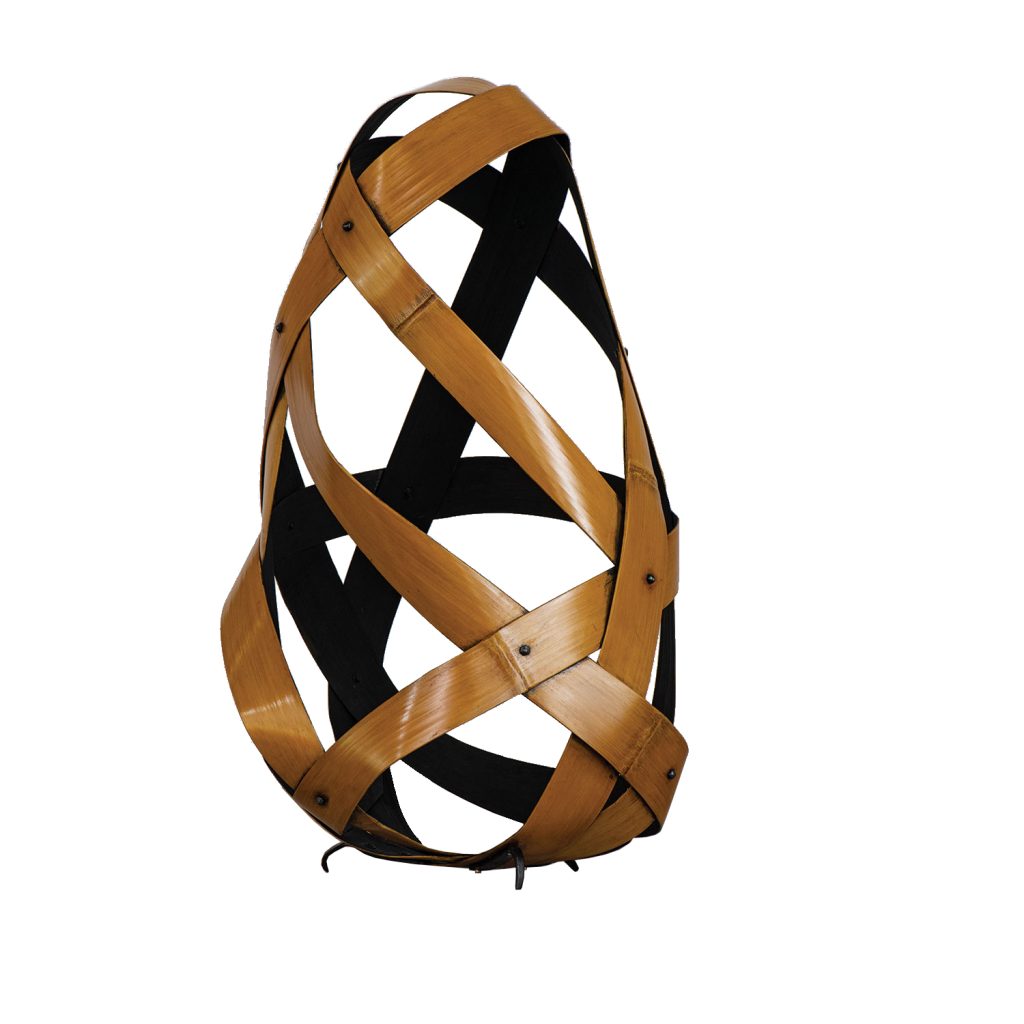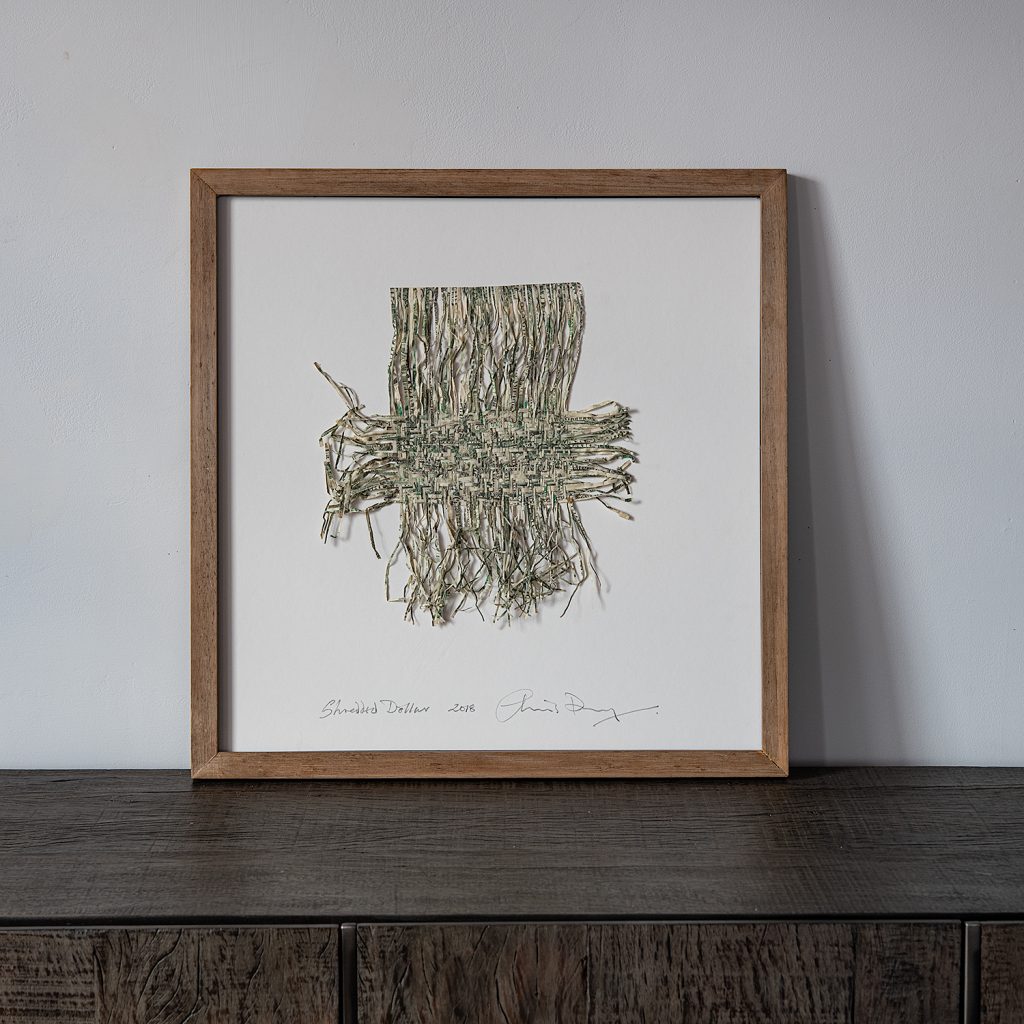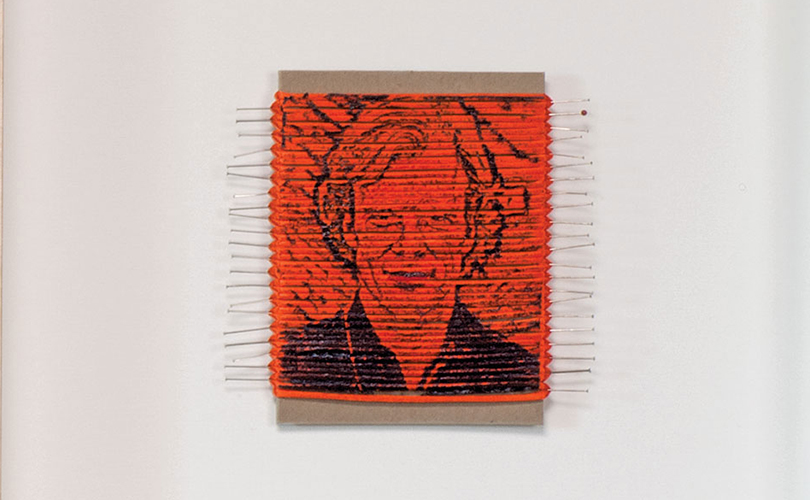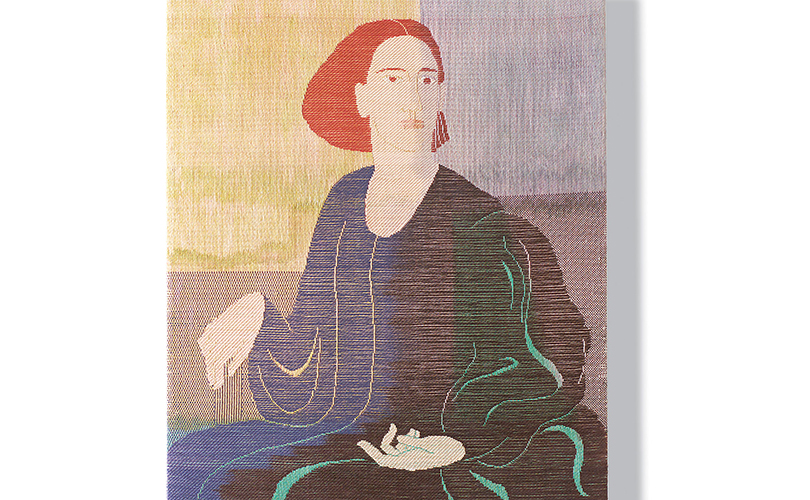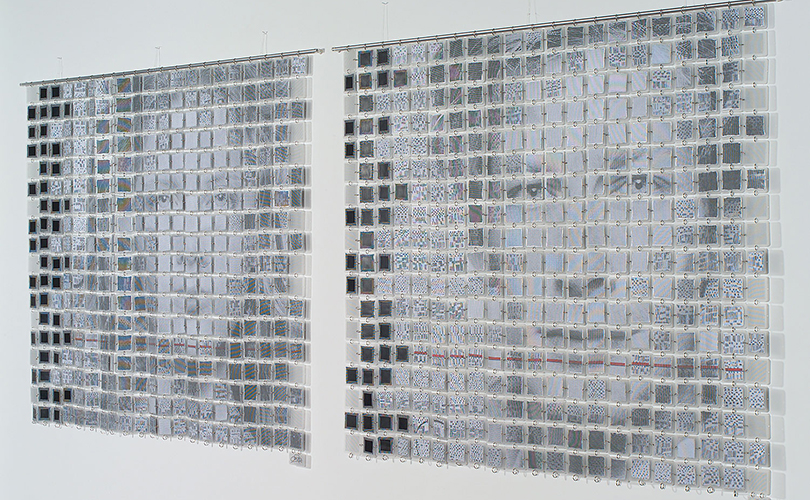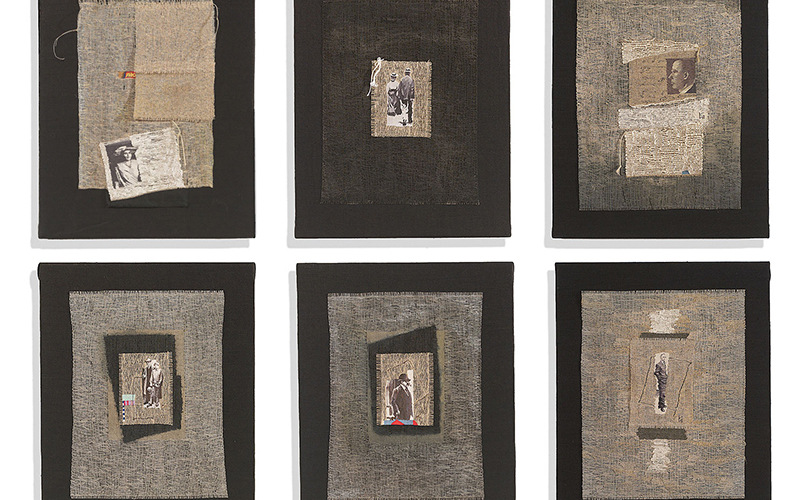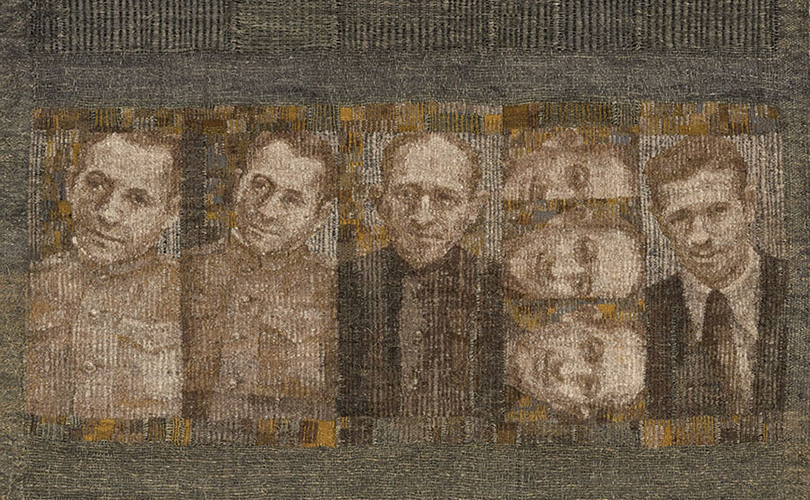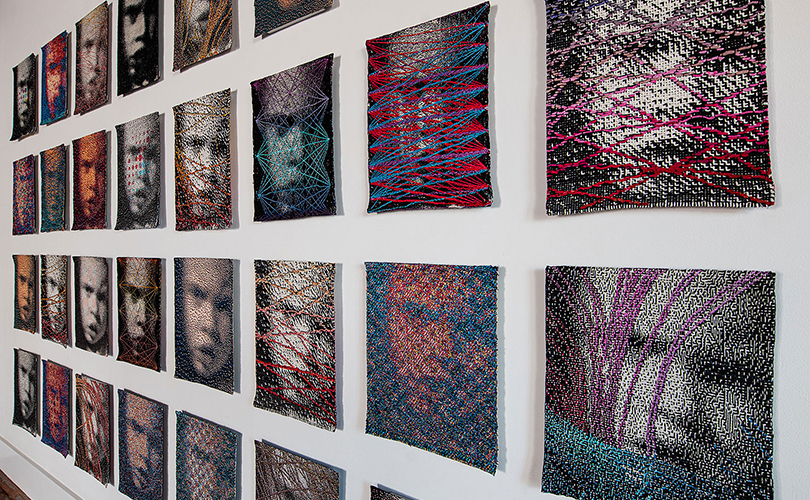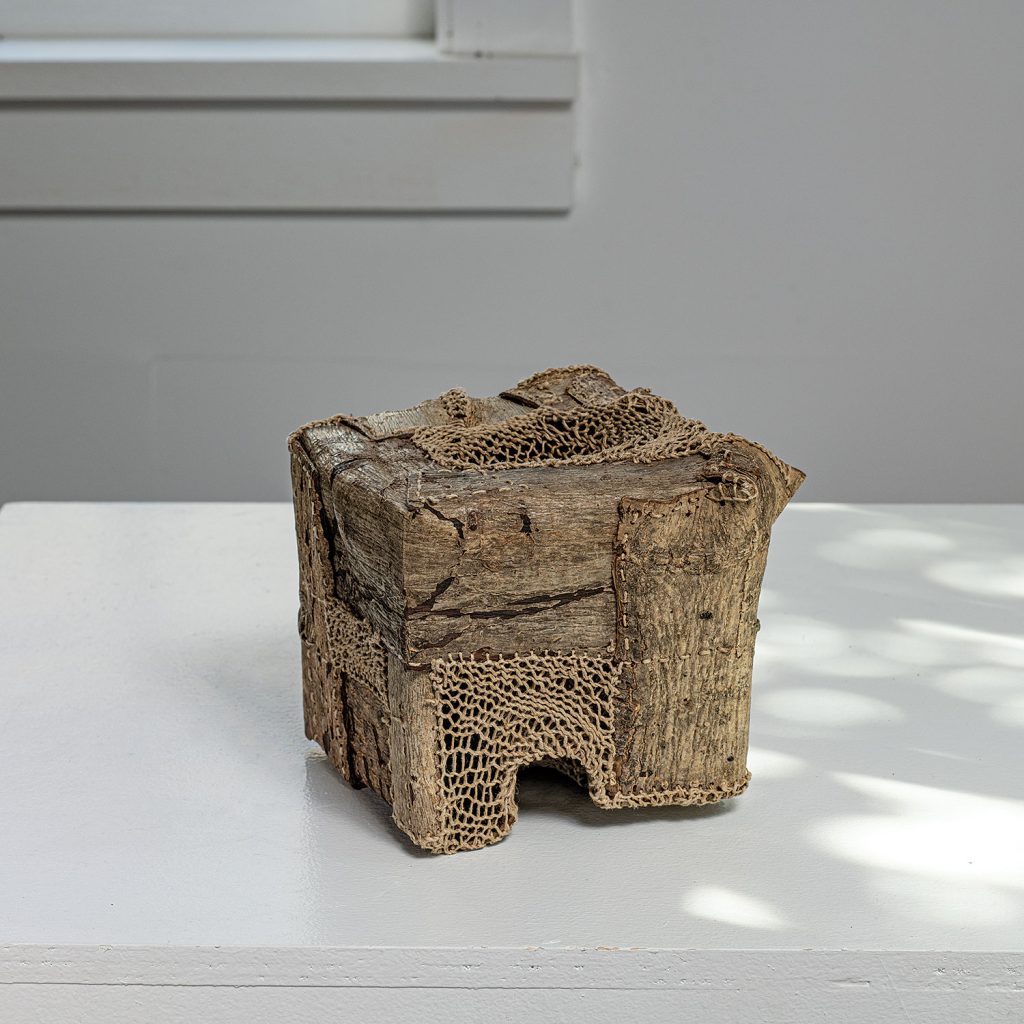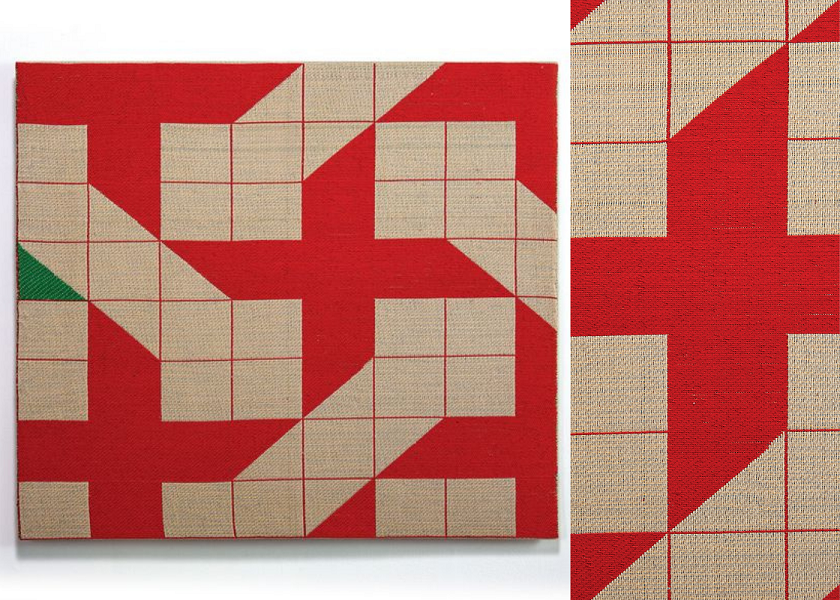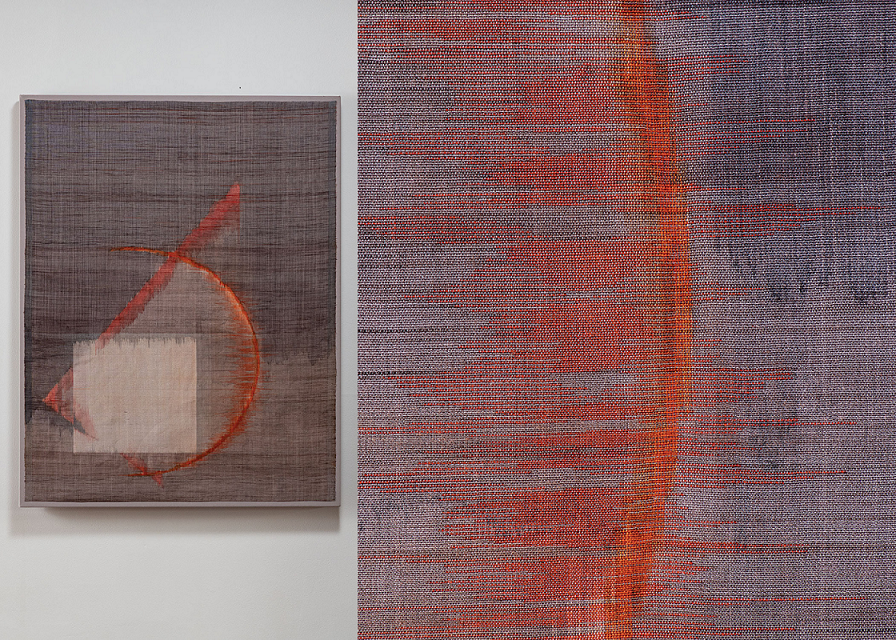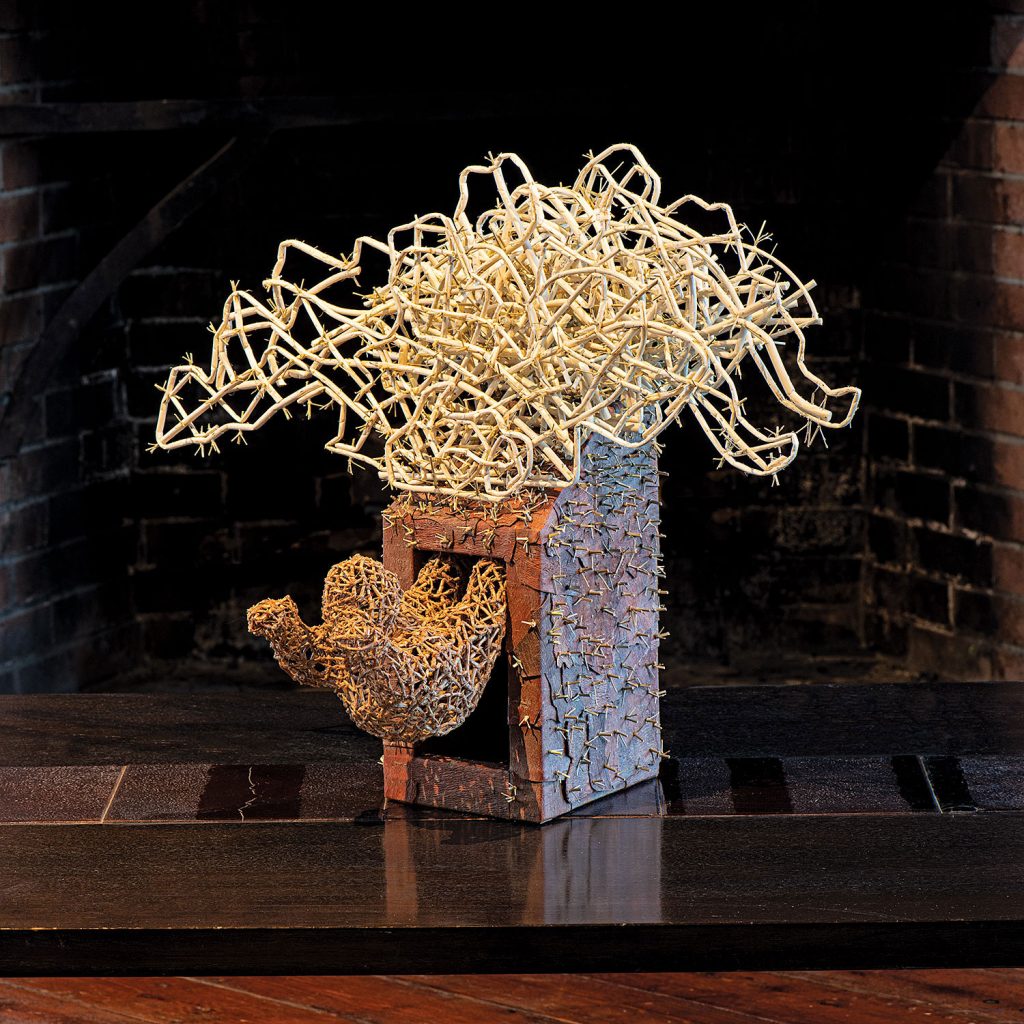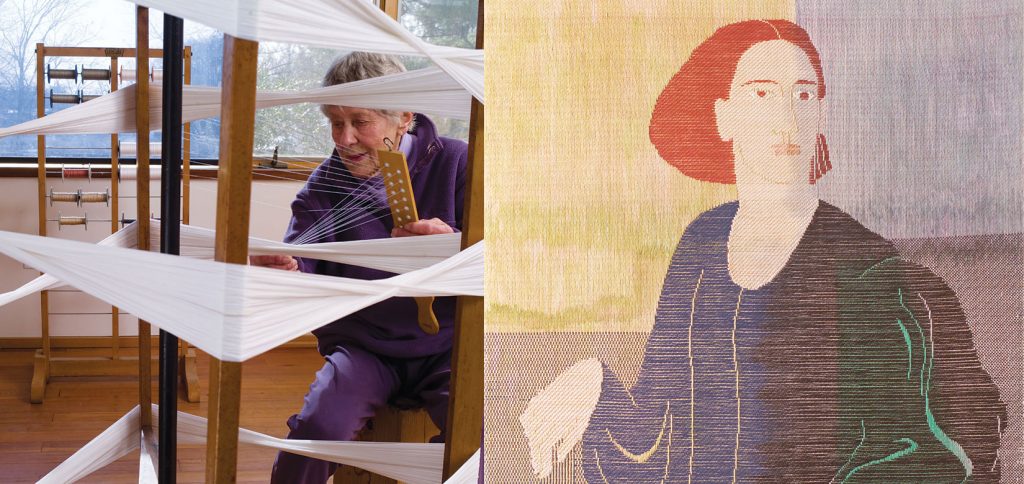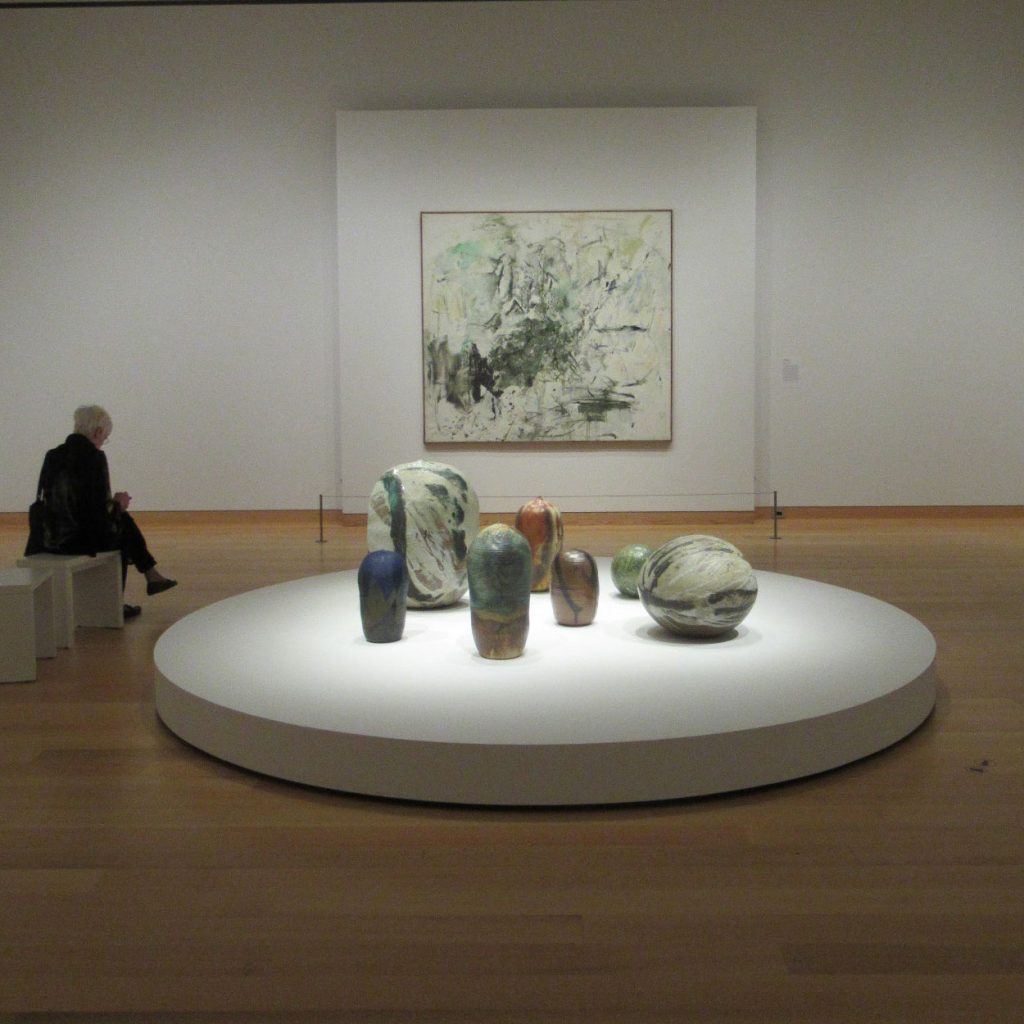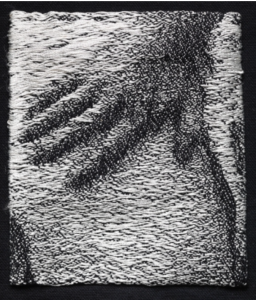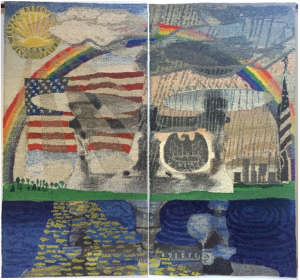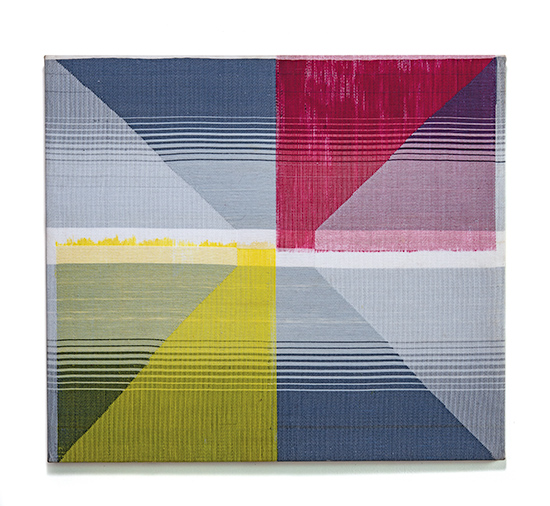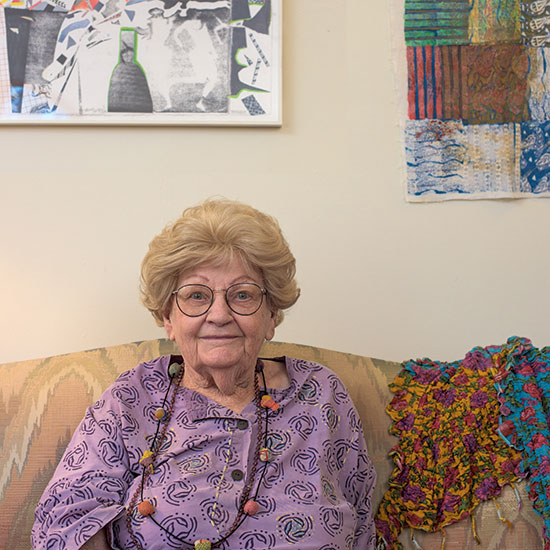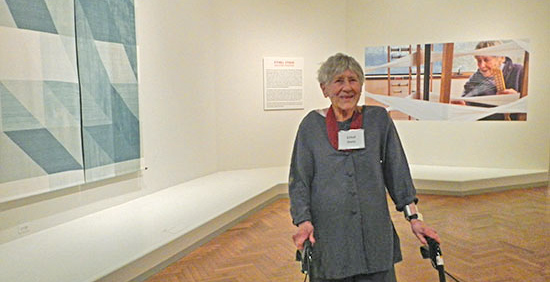
In our Art: Out and About columns we often recommend that people visit exhibitions in the US and abroad. Last week, we took our own advice and took an art break, unusual for us to do just weeks before one of exhibitions, and flew to Chicago, Illinois for an overnight stay.

The occasion was a chance to attend an artist talk at the Art Institute of Chicago by Venezuelan artists Eduardo Portillo and María Dávila, Weaving a World, to catch up with Eduardo and María, and see Threaded Visions: Contemporary Weavings from the Collection (through August 26, 2024)at the Institute in person. The couple has worked together since 1983. They are, as the Institute notes, “dedicated, almost obsessively so, to exploring the intricacies of the material production of textiles” and they have traveled extensively in China and India to study the traditional techniques of indigo dye making, sericulture, and handweaving. Through their extensive travels they have found that fiber is an ideal vehicle for understanding other cultures, the world around them, and even the cosmos.

In their lecture, Eduardo and María spoke about the ways in which they have endeavored to translate the topographical features of Venezuela, the rhythms of day and night, and cosmology into their weavings. White Dwarf, which opens the Threaded Visions exhibition, is an example. A white dwarf is what stars like the Sun become after they have exhausted their nuclear fuel. Near the end of its nuclear burning stage, this type of star expels most of its outer material, creating a luminous planetary nebula. White Dwarf, conveys this luminosity.
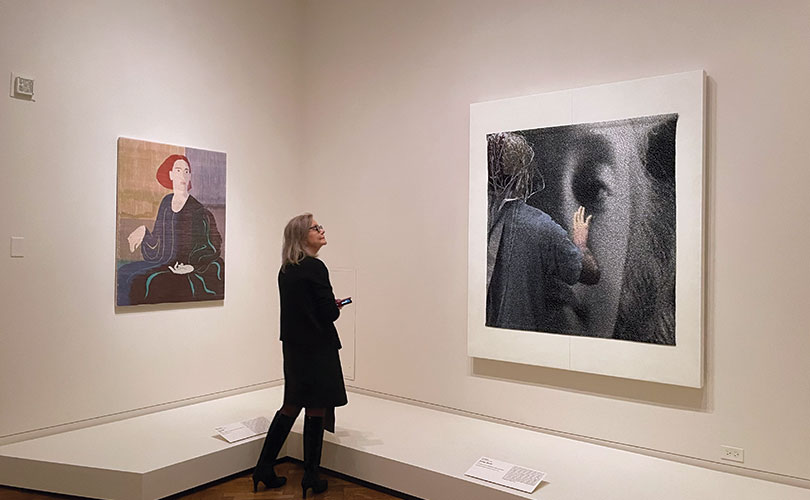
Thoughtfully curated by Christa C. Mayer Thurman curator, Melinda Watt, walking through the Threaded Visions exhibition was like a homecoming for us, the exhibit contains so many fine works by artists who are among our favorites. Among them, we found a truly exceptional Olga de Amaral that Watt had seen in the artist’s retrospective and acquired. The James Bassler work that is featured on exhibition promotional materials, A Weaving, is a four-selvaged work, a wedge weave, based on a blow-up from Kinko’s of a 5” x 8” weaving that Bassler made using thread spun from Trader Joe’s brown paper bags. We were also delighted to see two works by Ethel Stein that we had shown at browngrotta and very striking examples of work by Peter Collingwood and Lia Cook.
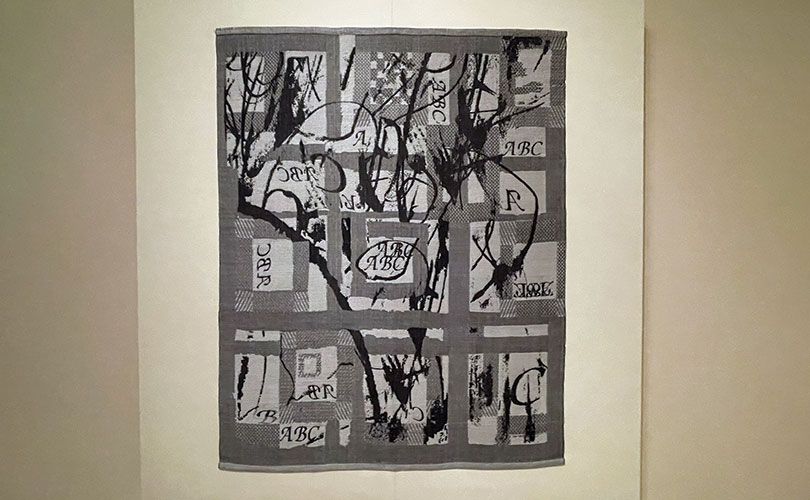
There were some surprises in Threaded Visions, too. Color Intersection M-II by Shigeo Kubota is a gem and we loved ABC Drawn Quilt by Cynthia Schira.
Chicago is a special place — an excellent choice even for a whirlwind stay. The train from the airport is cheap and quick. Getting around once you are in the city is easy. There are a profusion of options for great food, art, and accommodations — at all price ranges.

We had time to experience the grandeur of the Chicago Cultural Center, a fascinating 100+-year old building that was a public library and Civil War Memorial and Surviving the Long Wars: Transformative Threads (through December 8, 2024) on exhibit there. The “American Indian Wars” and the ongoing “Global War on Terror” are two of the longest military conflicts in US history. These long wars are intertwined through similar military strategies that often profile, target, and devastate Black, Indigenous, and People of Color communities while recruiting and enlisting people from these same groups. This tension is visible in the creative responses to these long wars by artists. Appropriate that the Grand Hall, which was built to honor the sacrifices of Union soldiers and their families, would host a reflection by artists impacted by other conflicts. The artworks in the exhibition draw from the artists’ respective creative traditions to repurpose military technology as a means of cultural resistance. The artists included are Dorothy I. Burge, a US military family member, Miridith Campbell (Kiowa), a US Marine Corps, Army, and Navy veteran, Mahwish Chishty (Pakistani-born American), and Melissa Doud (Ojibwe) a US Army veteran.

Given more time we could have also visited Art Expo, the newish-American Writers Museum, the Museum of Contemporary Art, the National Museum of Mexican Art, the Richard H. Driehaus Museum and much more. Just another excuse to visit again.


